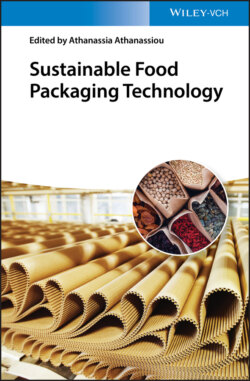Читать книгу Sustainable Food Packaging Technology - Группа авторов - Страница 27
1.3.11.1 Gelatin
ОглавлениеGelatin is a water‐soluble protein that is prepared by thermal denaturation of collagen in the presence of dilute acid (gelatin type A) or alkali (gelatin type B). Collagen is found in animal skins and bones such as connective tissues, skin, and bones (see Figure 1.8) [117]. Its structure is triple helix, being stabilized by the formation of hydrogen bridges between the chains through amino and carboxyl groups. When collagen is denatured, the triple helix breaks and the polypeptide chains adopt a random configuration, forming gelatin composed mainly of glycine, proline, and 4‐hydroxyproline residues [118–120]. Then, gelatin results in a heterogeneous mixture of single or multi‐stranded polypeptides, each with extended left‐handed proline helix conformations and containing between 300 and 4000 amino acids. Gelatin is primarily used as a gelling agent forming transparent elastic thermoreversible gels on cooling below 35 °C. It can be used as a valuable biopolymer in tissue engineering applications. Moreover, the gelification properties of gelatin, its capacity of forming and stabilizing emulsions, and its adhesive properties and dissolution behavior make this biopolymer a potential polymer for the manufacture of bio‐based films [121]. However, its poor mechanical properties, especially in the wet conditions, limit its application as a packaging material, [122, 123]. Many techniques, including vapor cross‐linking, orientation, and use of fillers such as hydroxyapatite nanoparticles (nHAs) and tricalcium phosphate (TCP), have been developed to reinforce gelatin‐based films [124].
